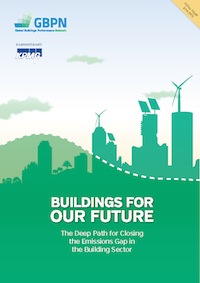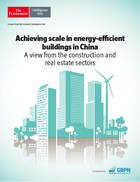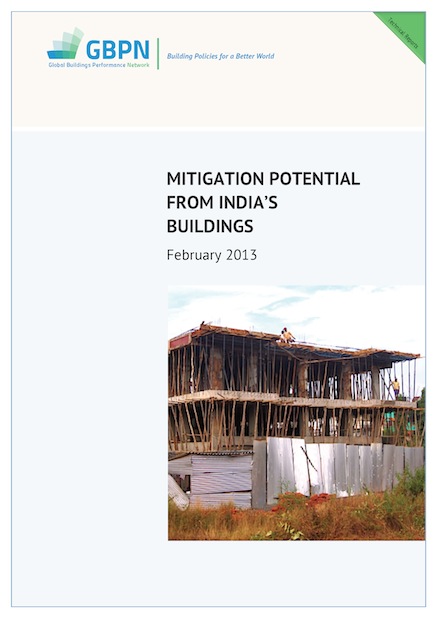印度建筑的减排潜力
可靠证据表明,至2050年印度建筑领域会产生巨幅能源增长,基于此估测,本报告分析了印度目前建筑节能减排的政策框架及其节能潜力。
30 result(s) found
可靠证据表明,至2050年印度建筑领域会产生巨幅能源增长,基于此估测,本报告分析了印度目前建筑节能减排的政策框架及其节能潜力。
 Why buildings hold the key to a low-carbon future? The GBPN provides evidence that ambitious improvements in the energy performance of buildings can reduce their CO2 emissions by one third by 2050 and sets out the necessary steps towards a "Deep market transformation".
Why buildings hold the key to a low-carbon future? The GBPN provides evidence that ambitious improvements in the energy performance of buildings can reduce their CO2 emissions by one third by 2050 and sets out the necessary steps towards a "Deep market transformation".
 A survey of senior building sector executives on the feasibility of implementing energy efficiency measures across their sector in China, Europe, India and the U.S.
A survey of senior building sector executives on the feasibility of implementing energy efficiency measures across their sector in China, Europe, India and the U.S.
 Highlights
Highlights
Experts from the GBPN network provide analysis and recommendations on how to improve energy efficiency of buildings in China.

可靠证据表明,至2050年印度建筑领域会产生巨幅能源增长,基于此估测,本报告分析了印度目前建筑节能减排的政策框架及其节能潜力。
A new briefing issued today distils the key findings from the recently released Intergovernmental Panel on Climate Change (IPCC) Fifth Assessment Report (AR5) for the buildings sector.
 Infographic: key findings from the recently released Intergovernmental Panel on Climate Change (IPCC) Fifth Assessment Report (AR5) for the buildings sector.
Infographic: key findings from the recently released Intergovernmental Panel on Climate Change (IPCC) Fifth Assessment Report (AR5) for the buildings sector.
“Adopting Decarbonization Policies in the Buildings and Construction Sector” provides a review of the evidence of the impact of implementing cost-effective policy measures to reduce the carbon footprint of the buildings and construction sector.
Many recent major studies, including the IPCC’s Fourth Assessment Report, have attested that energy efficiency is humanity’s prime option to combat climate change in the short- to mid-term. The potential to avoid CO2 emissions cost-effectively has been reported to be significant through efficiency policies. However, the review of global research findings on the quantification of cost-effectiveness of opportunities through improved efficiency has highlighted that there is a major shortcoming in the vast majority of such calculations.